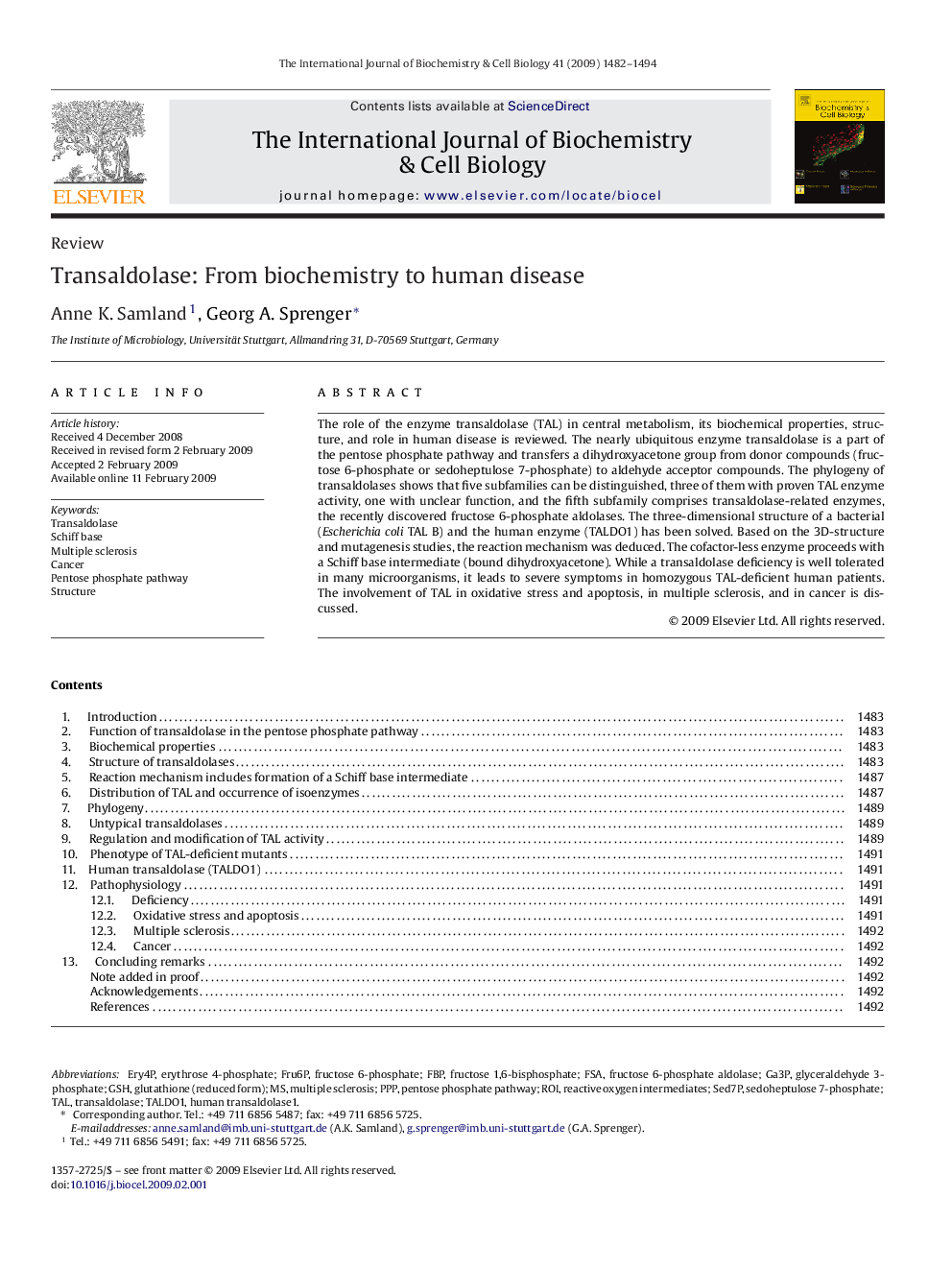| کد مقاله | کد نشریه | سال انتشار | مقاله انگلیسی | نسخه تمام متن |
|---|---|---|---|---|
| 1984923 | 1539951 | 2009 | 13 صفحه PDF | دانلود رایگان |

The role of the enzyme transaldolase (TAL) in central metabolism, its biochemical properties, structure, and role in human disease is reviewed. The nearly ubiquitous enzyme transaldolase is a part of the pentose phosphate pathway and transfers a dihydroxyacetone group from donor compounds (fructose 6-phosphate or sedoheptulose 7-phosphate) to aldehyde acceptor compounds. The phylogeny of transaldolases shows that five subfamilies can be distinguished, three of them with proven TAL enzyme activity, one with unclear function, and the fifth subfamily comprises transaldolase-related enzymes, the recently discovered fructose 6-phosphate aldolases. The three-dimensional structure of a bacterial (Escherichia coli TAL B) and the human enzyme (TALDO1) has been solved. Based on the 3D-structure and mutagenesis studies, the reaction mechanism was deduced. The cofactor-less enzyme proceeds with a Schiff base intermediate (bound dihydroxyacetone). While a transaldolase deficiency is well tolerated in many microorganisms, it leads to severe symptoms in homozygous TAL-deficient human patients. The involvement of TAL in oxidative stress and apoptosis, in multiple sclerosis, and in cancer is discussed.
Journal: The International Journal of Biochemistry & Cell Biology - Volume 41, Issue 7, July 2009, Pages 1482–1494